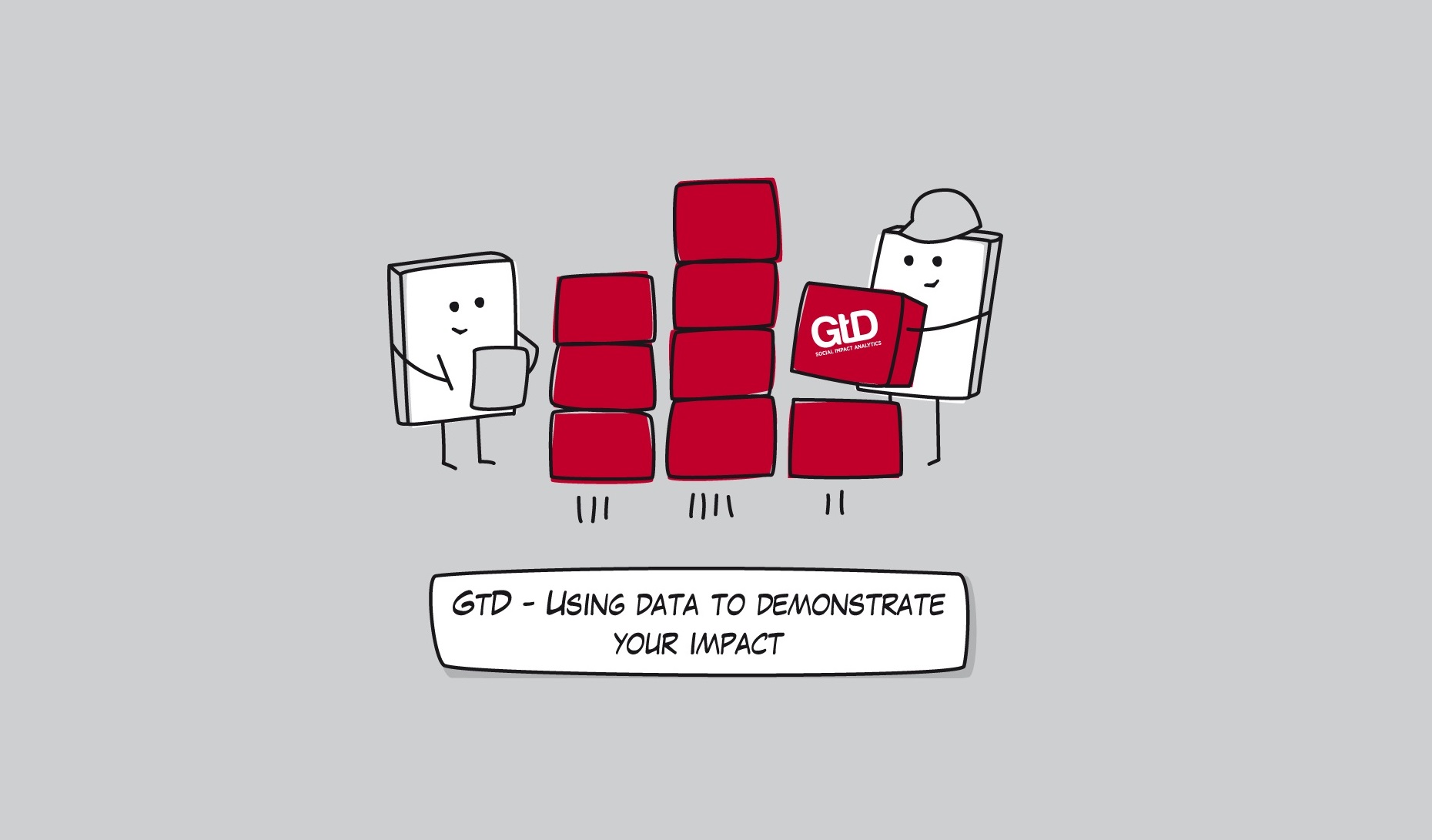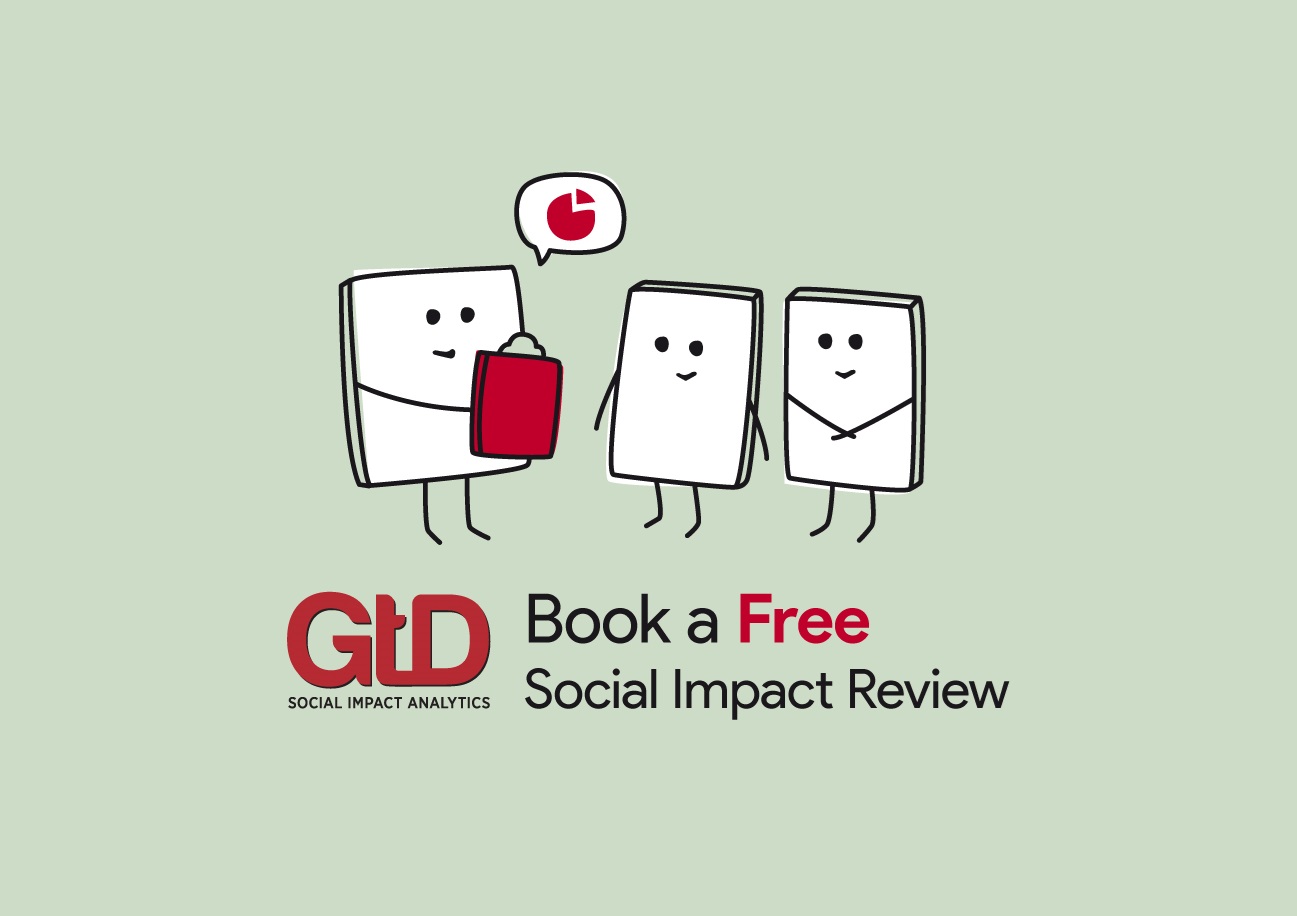What Are Funders Looking For in Impact Evaluation?
Finally, it’s finished. After months of hard work from you and your team you’ve finished the Big Project. But it’s not time to celebrate just yet, you still need to evaluate the impact of the project.
Your funders want to know that their money is being used as effectively as possible – and that’s where your impact evaluation comes in. A well written and comprehensive impact evaluation allows your funders readily to see what worked and what didn’t; what’s worth pursuing; what can be improved; and how it can be improved.
Designing an impact evaluation, collecting the data you need, analysing that data, and then presenting the evaluation in a way that’s informative and concise is a lot of work, and this is where Get the Data can help you and your organisation.
Get the Data will help you to design the best possible impact evaluation, but however you choose to do it there are two key goals for your impact evaluation:
- Your impact evaluation should be built on good data and analysis;
- Your findings should be communicated clearly and simply.
Confidence in your results
If you want to provide an accurate and detailed evaluation of the impact of your project then you need accurate and detailed data. The more confident you are in the accuracy of your data and your analysis then the more confident you will be in your conclusions. And that means your funders will have more confidence in you.
How do you get confident?
- Plan your evaluation. Before beginning the evaluation identify the project’s outcomes and decide on a method for measuring them. While the funding proposal for your project will have included a plan for how you would evaluate the project it’s also important to consider what might have changed since beginning the project – perhaps you became aware of outcomes that you didn’t expect.
- Use recognised methods. It’s important to show that the methodology you’ve used is appropriate to the type of work you are evaluating. Using an appropriate methodology means you can see what’s important straight away, and you don’t always have to use advanced or experimental approaches. For example:; a theory-based evaluation approach, such as Theory of Change, allows you to communicate a clear story of what happened and why your project caused it to happen. This can also help you identify what data you need to collect.
- Embrace limitations. All data has limitations. If you are aware of the limits of your data, and account for those limits, then you will have better data. By including details in your evaluation about the limits of your data and the steps you took to overcome them you (and your readers) can have more confidence in the results of your analysis. For example: perhaps your survey doesn’t fully represent your population. By being aware of this you can weight your data so that it better represents the population.
- Be transparent. Funders aren’t only looking for positive outcomes. If something didn’t work it’s as important to report that, and why it didn’t work, as it is to report successful outcomes. Nothing is ever perfect – but unexpected outcomes can often be just as important as the intended outcomes.
There are many different methodological approaches to collecting and analysing data, and Get the Data provides specialist advice and support with all of these tasks, so that you can be confident in the quality of your data and its analysis.
What to look for in an impact evaluation
Clear, easy to understand communication is the most important part of any presentation. Your impact evaluation is going to be read by people who may not be specialists in the type of research and evaluation methods that you have commissioned.
After collecting and analysing your data, Get the Data will help you to present your results. But what should you look for in an impact evaluation?
A good organising principle is to think of your report as a story with a beginning, a middle, and an end.
A beginning…
The beginning of the evaluation is the introduction. Here you describe the background to the project: what was the need for the project? What were the intended outcomes? How did you try to achieve those outcomes? This section should be as simple and concise as possible.
…a middle…
The middle of your story is the main body of the evaluation. This section includes more detailed discussion and technical information but it is still important to ensure that the writing is clear.
This section may also contain a lot of information. Separate sections, clearly labelled with subheadings, helps to organise this information.
Graphics help with understanding quantitative data, and there are many ways of visualising information. The point of graphics is to simplify complex data and Get the Data provides visualisations appropriate for the information you want to communicate – your readers shouldn’t be left scratching their heads trying to work out what they are being shown.
Similarly, quotes from project co-ordinators or participants can help with presenting qualitative findings. A quote of one or two sentences can provide a surprising amount of context and really help with understanding the benefits of a project. Eye-catching quotes can also work well as subheadings.
…and an end.
The end of your story is the conclusion. This is the most important part of any report. Here you summarise the findings of project and your analysis of the data you’ve gathered, and discuss the success (or otherwise) of the project: Were the outcomes what you expected? How could the outcomes be improved? Would the project work on a larger scale?
It is important to keep the conclusion as concise and accessible as possible – the conclusion is very often the part that readers will look at first, and for some readers it will be the only part of the report that they read. If you’re not sure that your conclusion is clear enough then ask someone who isn’t familiar with it to read it and tell you what they did and didn’t understand about it.
Creating a summary
As well as the impact evaluation itself it’s useful to create a simple one- or two-page summary of the headlines from the evaluation. Using infographics, pull quotes, and eye-catching headlines, a well-designed summary can quickly tell readers what they need to know.
Poster infographics can be used to summarise headline information from a report.
Get the Data can help you with graphics and designs to create a summary that is visually interesting and informative.
How we can help
This article has provided you with some ideas about what to look for in your impact evaluation, and how Get the Data can help you present your findings so that your funders can quickly see what you’ve achieved. If you would like further advice on impact evaluations or if you want to find out more about how Get the Data can help your organisation then please contact us.

















